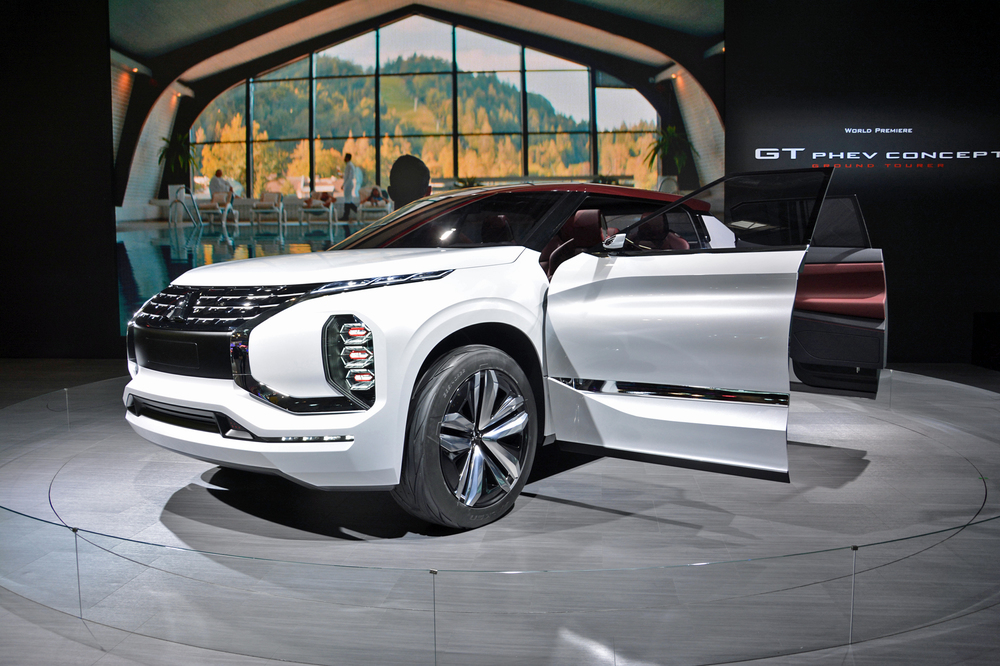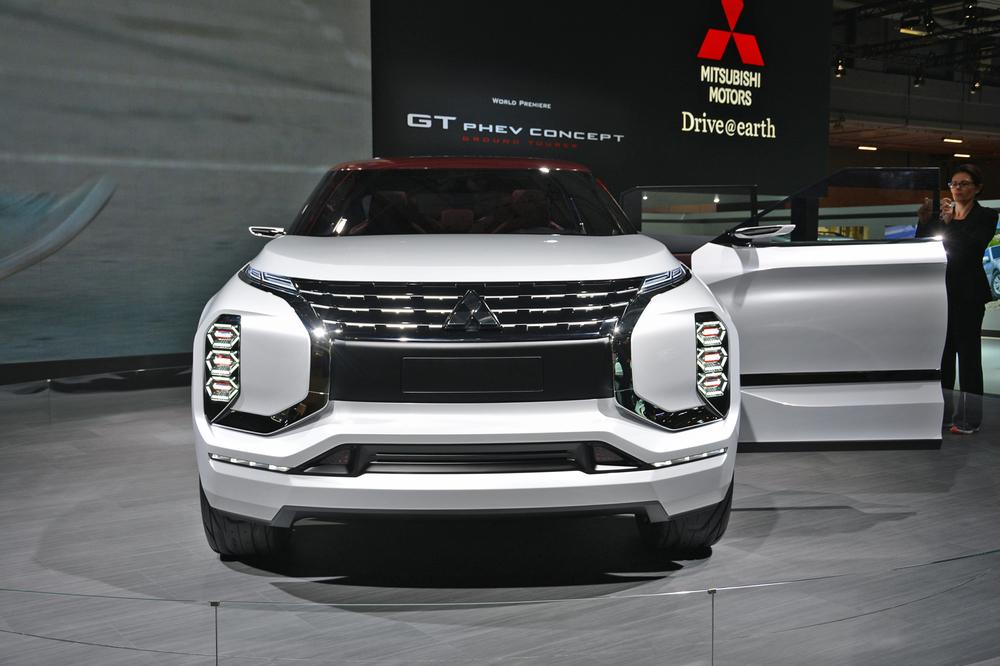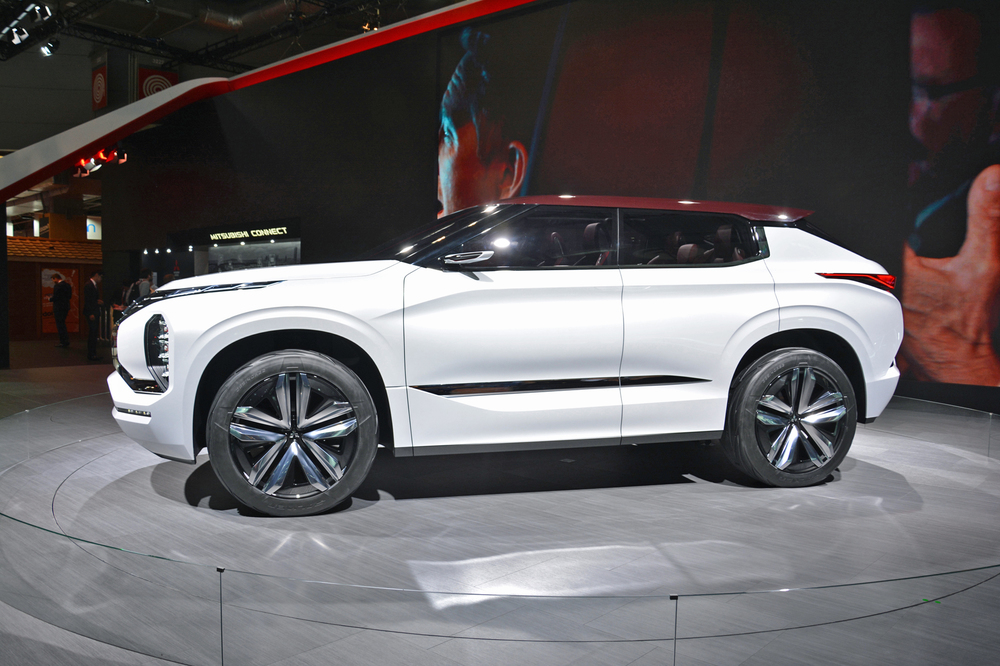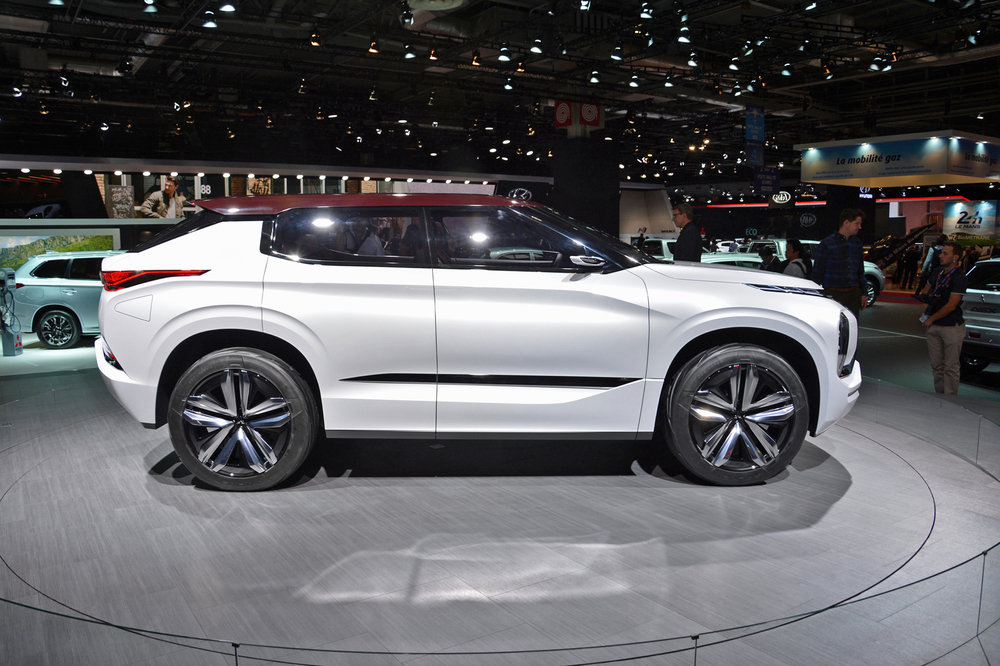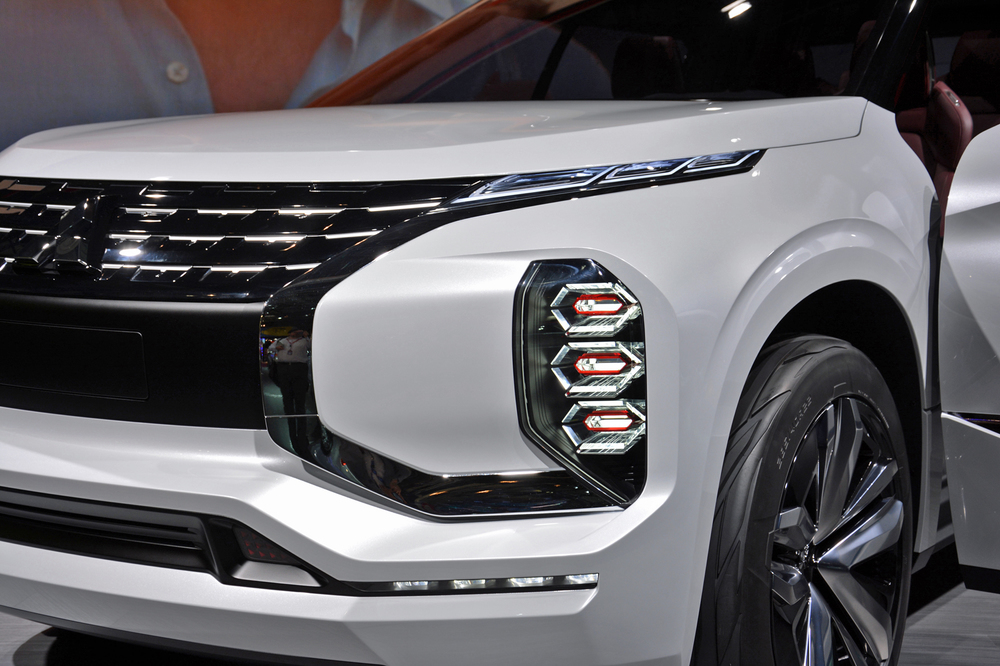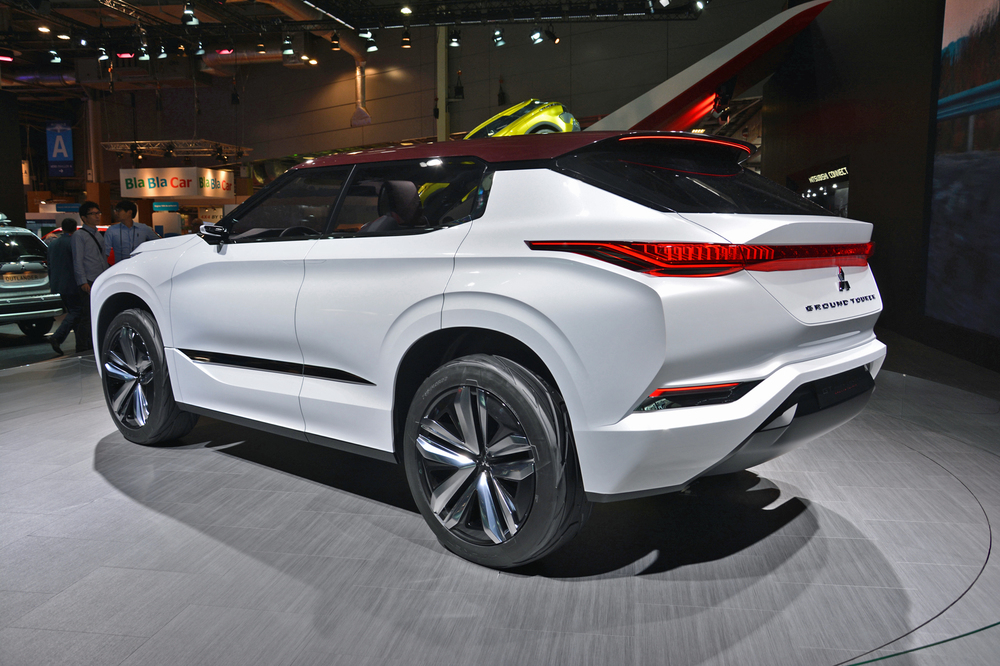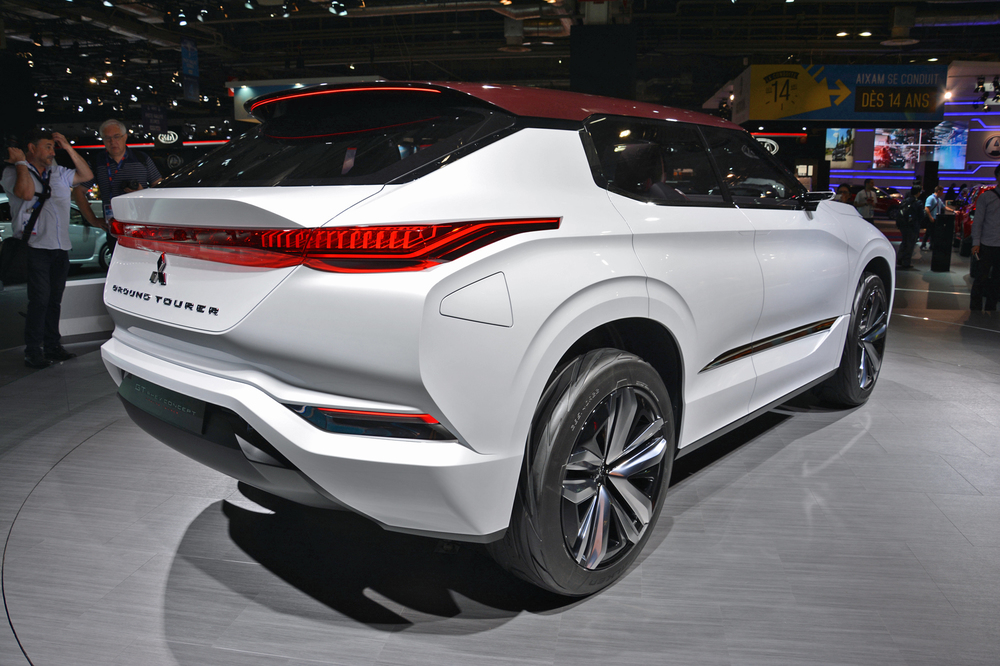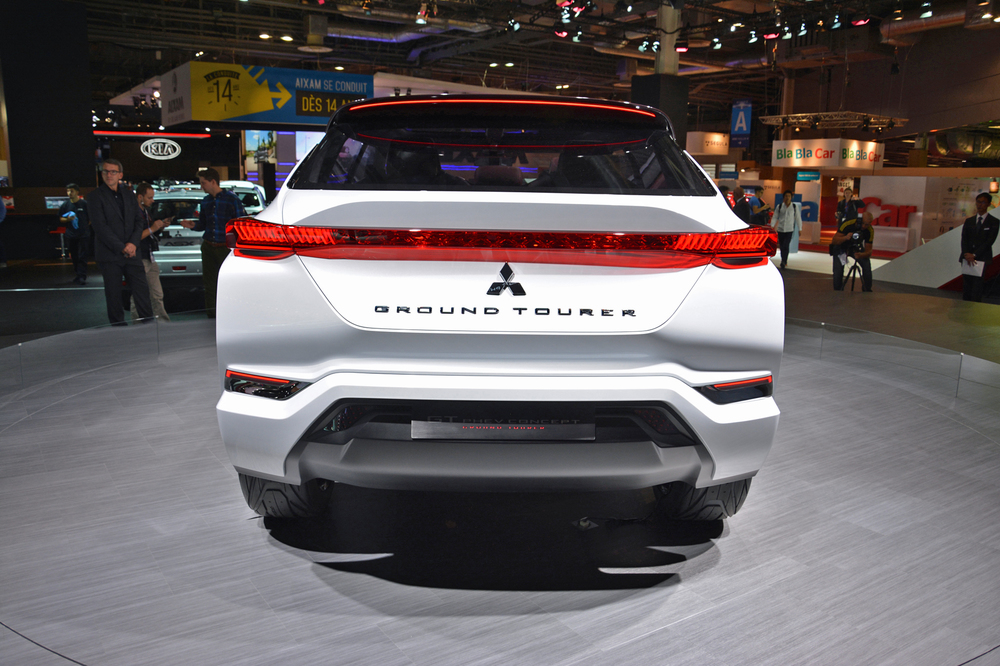Mitsubishi is taking the wraps off the 2016 Paris Motor Show concept car it first teased way back in June.
Like many of the Japanese firm’s recent concepts, the Mitsubishi GT-PHEV is an SUV with a plug-in hybrid powertrain. Mitsubishi has said many times over the past few years that electrified cars are its future, but hasn’t backed up its talk with much action. So the GT-PHEV could preview a future production model, but it could just as easily be another concept-car flight of fancy.
The “GT” in GT-PHEV stands for “ground tourer,” a play on the “grand tourer” designation traditionally applied to fast, luxurious sports cars. Mitsubishi says the concept previews a large, fairly upscale SUV that sounds like it could be a replacement for the cult-classic Montero that Mitsubishi discontinued in the U.S. over a decade ago.
The styling includes the “Dynamic Shield” grille seen on the current Outlander, flanked by what appear to be very large driving lights in vertical pods, with wispy headlights at the top of the front fascia. It’s a setup that seems like it was borrowed from the current Jeep Cherokee. The interior features a high center console that divides the driver and passenger areas to create a cockpit-like feel, Mitsubishi says.
Read more: Mercedes-AMG GT Roadster coming to Paris
The powertrain includes three electric motors and some form of internal-combustion engines (Mitsubishi was light on details about that). One motor helps the engine drive the front wheels, while the other two drive the rear wheels, giving the GT-PHEV all-wheel drive. Mitsubishi wouldn’t disclose any power figures, but it did say that the GT-PHEV is capable of running on electric power alone for up to 120 kilometers (74 miles).
The GT-PHEV looks like it will make a splash in Paris, but this flashy concept doesn’t match up with the reality of Mitsubishi’s current situation. While it does sell the Outlander Plug-In Hybrid in Europe and Asia, the model’s U.S. launch has been delayed multiple times. The carmaker also admitted earlier this year that it cheated on fuel economy tests in Japan, and is now dealing with fallout from that. However, in May, Nissan threw Mitsubishi a lifeline, purchasing a majority stake in the embattled carmaker.
Editors' Recommendations
- Toyota gives its sweet, race-ready Supra the green flag for production
- Infiniti’s Formula One-inspired Project Black S may enter production
